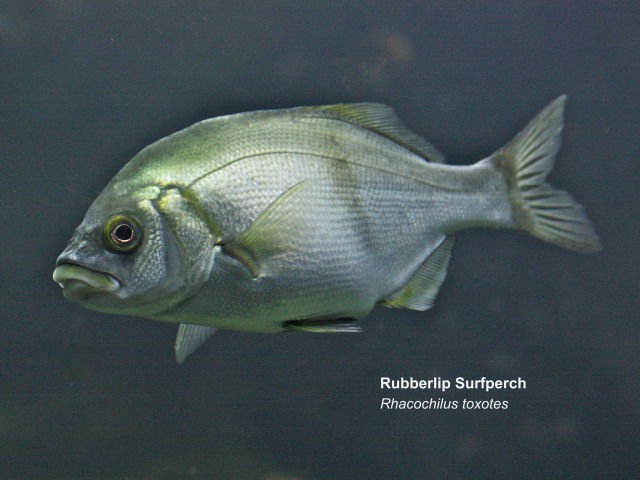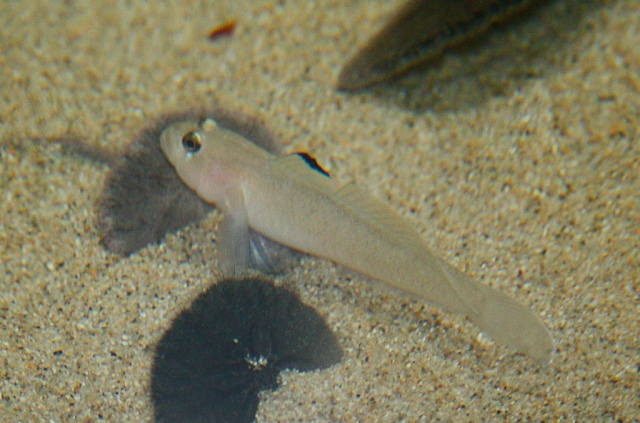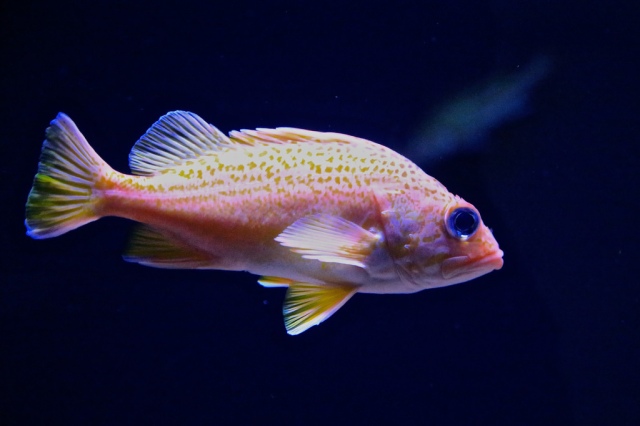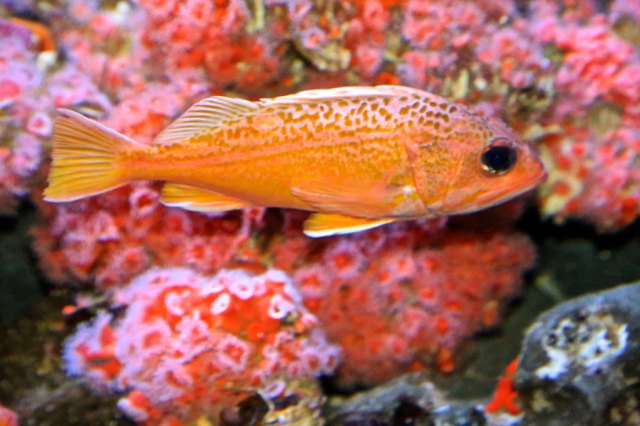TAXONOMY
Kingdom: Animalia
Phylum: Chordata
Class: Actinopterygii (ray-finned fishes)
Order: Perciformes (Perch-likes)
Family: Embiotocidae (Surfperches)
Genus/species: Hypsurus caryi
GENERAL CHARACTERISTICS:
Compressed and oval to oblong-shaped body. Base coloration is usually silver, and some species have stripes or bars, which may be dependent on the time of year (breeding vs. non-breeding coloration) and whether the fish is a juvenile or adult. Fins tinged with orange with black blotch on continuous soft dorsal and anal fins. The caudal (tail) fin is forked.
Maximum fish length per species ranges from 4 to 18 inches.
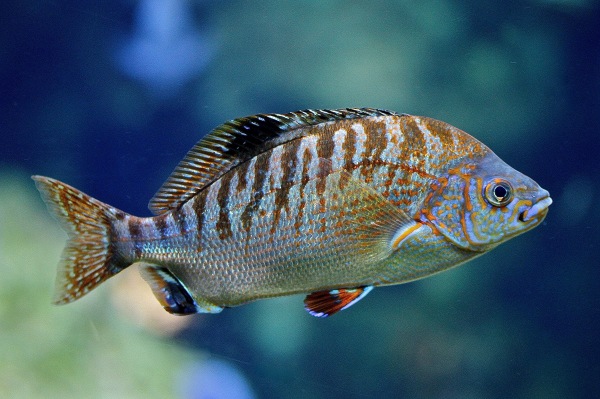
DISTRIBUTION/HABITAT: Subtropical. Cape Mendocino to northern Baja California along rocky shores, often at the edges of kelp beds; occasionally over sand but not found in the surf zone.
DIET IN THE WILD: Rainbow Surfperch feed on isopods, amphipods and other crustaceans; also snails and brittle stars.

REPRODUCTION: H. caryi males approach the female from below; both swim with vents close for 2 or 3 seconds, then separate and repeat the process. As with all surfperches fertilization is internal and they are viviparous (livebearers) giving birth to as many as 22 young which are fully-formed (5 cm) at birth miniature versions of the adults.
CONSERVATION: IUCN: Not evaluated.
REMARKS: Divers in Monterey Bay report Rainbow Surfperch cleaning ocean sunfish (Mola mola).
References
Ron’s flickr https://www.flickr.com/photos/cas_docents/36159456555/in/album-72157608359804936/
California Academy of Sciences Steinhart Aquarium California Rocky Coast 2019
California Dept. of Fish and Wildlifewww.dfg.ca.gov/marine/sfmp/surfperch-id.asp
fishbase www.fishbase.org/summary/3633
eol eol.org/pages/995097/overview

